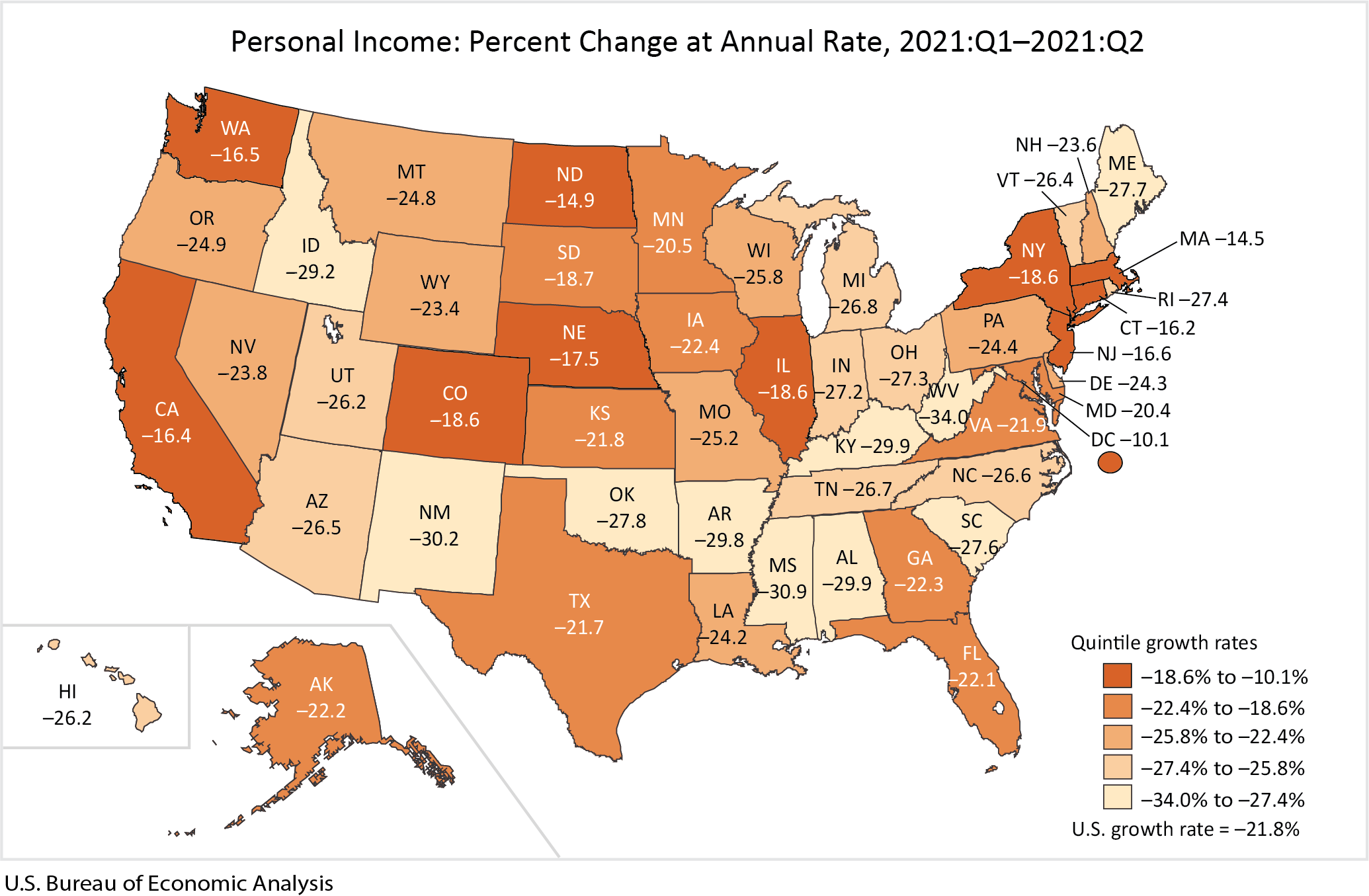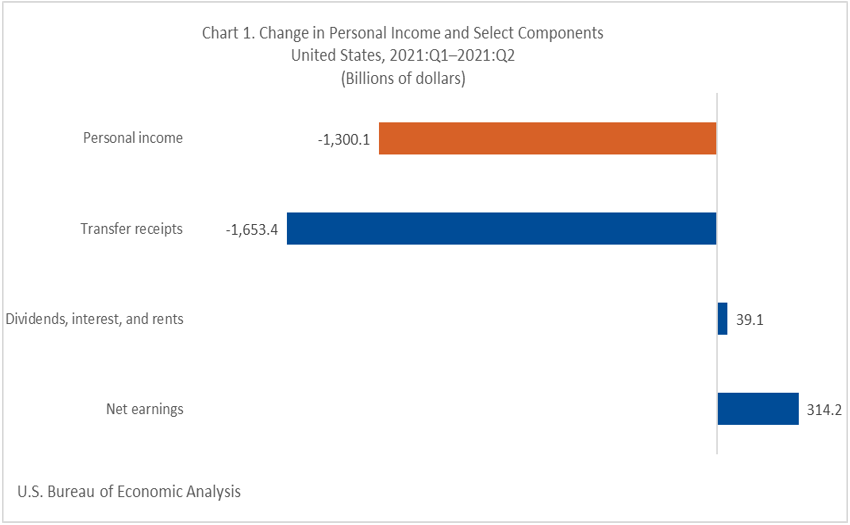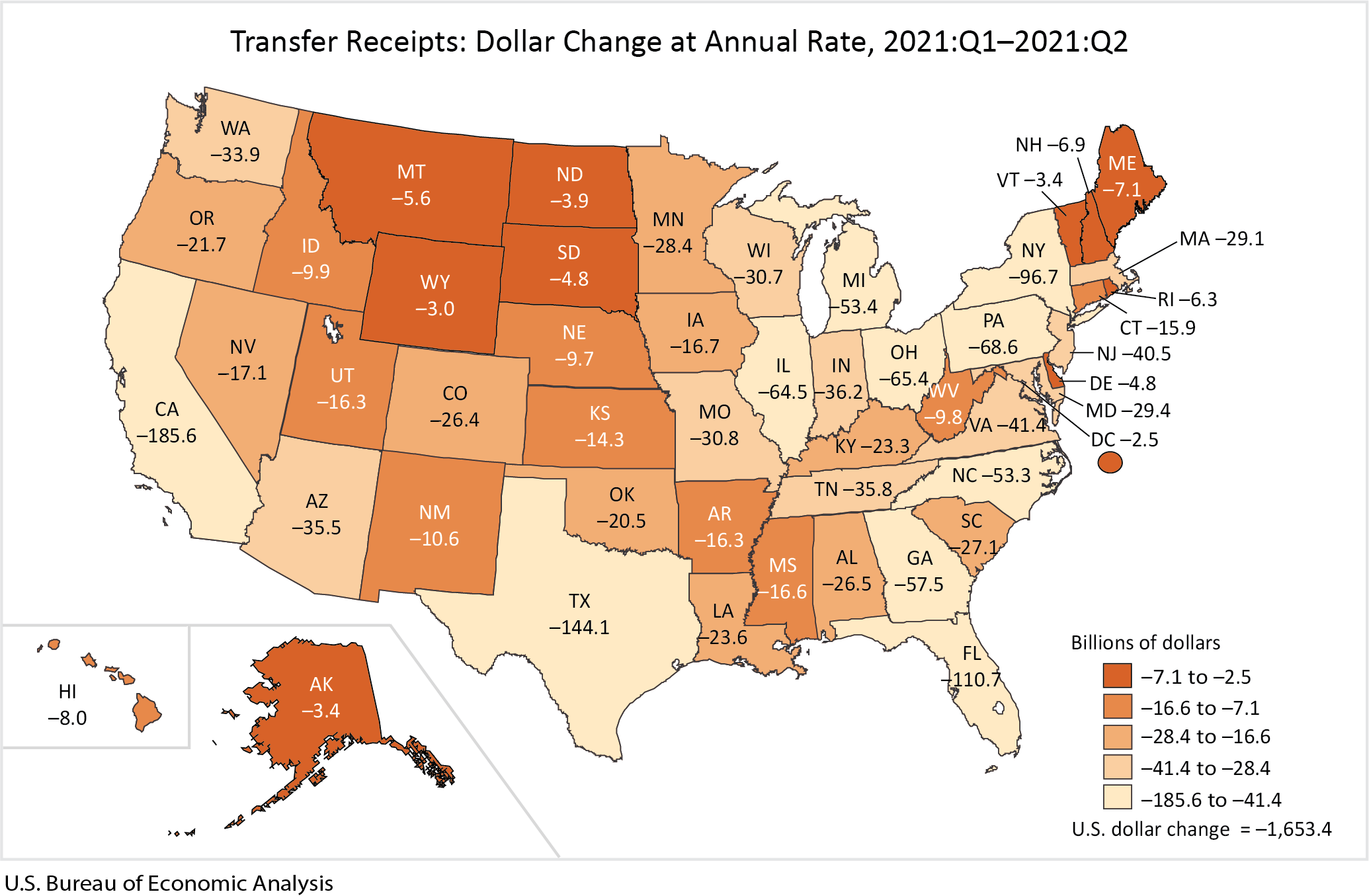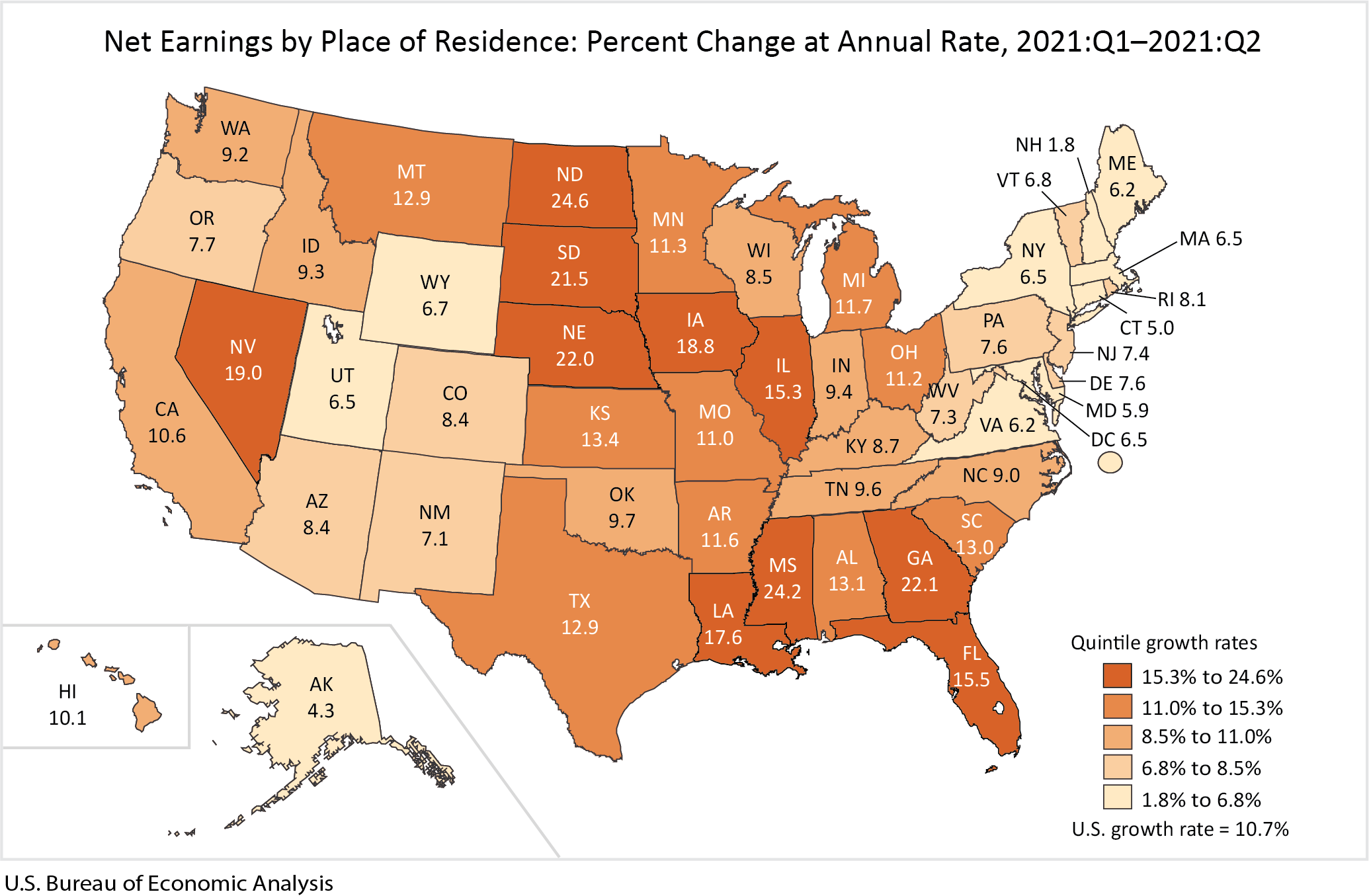News Release
Personal Income by State, 2nd Quarter 2021
State personal income decreased 21.8 percent at an annual rate in the second quarter of 2021 after increasing 56.9 percent in the first quarter, according to estimates released today by the U.S. Bureau of Economic Analysis (BEA) (table 1). In the second quarter of 2021, the decrease in transfer receipts was the leading contributor to personal income declines in all 50 states and the District of Columbia (table 2). The percent change in personal income across all states ranged from –10.1 percent in the District of Columbia to –34.0 percent in West Virginia.
Transfer receipts decreased $1.7 trillion for the nation in the second quarter of 2021, accounting for more than the entire $1.3 trillion decrease in personal income (chart 1).
The 2021 second-quarter estimates of state personal income reflected the continued economic recovery, reopening of establishments, and continued government response related to the COVID-19 pandemic. In the second quarter, government assistance payments associated with pandemic-related assistance programs, such as direct economic impact payments and expanded unemployment benefits, declined. The full economic effects of the COVID-19 pandemic cannot be quantified in the state personal income estimates because the impacts are generally embedded in source data and cannot be separately identified.
Transfer receipts. The decrease in transfer receipts primarily reflected a reduction in direct economic impact payments provided by the Coronavirus Response and Relief Supplemental Appropriations Act and the American Rescue Plan Act and a decrease in state unemployment insurance compensation. Transfer receipts decreased in every state, ranging from –$2.5 billion in the District of Columbia to –$185.6 billion in California (table 2).
Earnings. For the nation, earnings increased 10.7 percent in the second quarter of 2021 after increasing 2.6 percent in the first quarter (table 2). The increase in earnings reflected the continued economic recovery following the partial economic shutdown that began in the first quarter of 2020 after the start of the COVID-19 pandemic.
Earnings increased in 21 of the 24 industries for which BEA prepares quarterly estimates (table 4). Accommodation and food services; professional, scientific, and technical services; and farming were the leading contributors to the overall growth in earnings. The percent change in earnings across all states ranged from 1.8 percent in New Hampshire to 24.6 percent in North Dakota (table 2).
Property income. Property income (dividends, interest, and rent) increased 4.4 percent for the nation in the second quarter of 2021 after decreasing 0.4 percent in the first quarter. The percent change in property income across all states ranged from 2.1 percent in Hawaii and Mississippi to 7.3 percent in Utah (table 2).
The estimates for the second quarter of 2021 incorporate the results of BEA's annual update of state personal income that was also released today. The annual estimates of state personal income for 1998 to 2020 and the quarterly estimates of state personal income for the first quarter of 1998 through the first quarter of 2021 were revised. The update incorporates revised source data that are more complete and more detailed than previously available, updates to seasonal factors, and the results of the July 2021 annual update of the National Income and Product Accounts. The November 2021 issue of the Survey of Current Business will contain an article describing the results.
BEA state per capita personal income statistics are calculated using Census Bureau midyear population estimates. These annual midyear estimates are based on the 2010 census. BEA will incorporate Census Bureau midyear population estimates based on the 2020 census results when they become available.
Next release: December 17, 2021 at 8:30 A.M. EST
Personal Income by State, 3rd Quarter 2021



